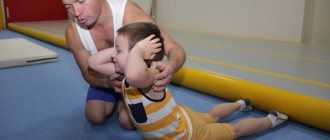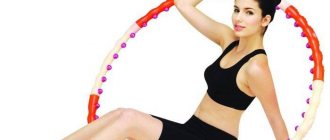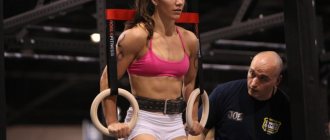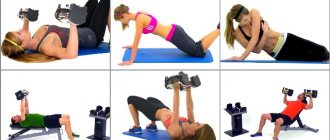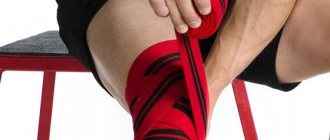Body ballet is a fitness movement based on exercises from classical choreography, ballet, yoga and Pilates and adapted for a wide range of people. With the help of ballet training, you will make your body slim, develop flexibility, improve posture, gain flexibility and grace.
At all times, ballet and classical dances have been very popular. Many girls, from early childhood, dream of being ballerinas and performing on the big stage. And today there is a great opportunity to become one step closer to the world of dance art. Body ballet has become a popular sport quite recently, although its first appearance in fitness clubs dates back to the mid-90s.
Body ballet - what is it?
Body ballet as a form of fitness is a mixture of exercises from yoga, Pilates and ballet movements. The direction appeared back in the nineties, and was developed specifically for adults who do not need to have choreography skills and ballet flexibility to perform all the movements.
Exercises in body ballet contribute to the development of grace and flexibility, while qualitatively working the muscles, stretching them in length, and not width, as in the strength directions.
Exercise technique: from warm-up to cool-down!
The standard training algorithm includes the following points:
- Warm-up, gymnastics;
- Lessons at the barre/chair;
- Exercises without support in a standing position;
- Pilates elements on the floor;
- Stretching, stretching.
An obligatory part of body ballet classes is a warm-up, which is necessary to warm up the muscular system and prepare it for the load. The training program includes the basic elements of classical ballet dance (plie, pirouettes, batmans), power movements, and entire choreographic sketches. At the end of the lesson, you need to stretch, let your muscles cool down, and do a cool-down. The complexity and pace of exercises should be increased gradually. Beginners work with their own body weight; later, sports equipment is added to the training: dumbbells, fitness tape, balls.
Despite the fact that ballet choreography is adapted for sports and fitness, it is important to follow the technique of its execution. This will help achieve the best results and minimize the likelihood of injury. At the beginning, it is better to train with an instructor, watch yourself in the mirror to hone your technique. The duration of the lesson in moderate intensity mode is 40-60 minutes.
Benefits and disadvantages of body ballet
Benefit:
- Strengthens even the smallest muscles of the body, both external and deep.
- Increases flexibility of muscles and ligaments.
- Improves blood circulation, normalizes the functioning of internal organs.
- Helps reduce body weight.
- Improves joint mobility.
- Makes your posture beautiful and movements graceful.
- Lengthens muscles, making them chiseled.
- Does not have shock ballet load.
- The exercises are safe and mostly done with your own body weight.
- Light balls, fitballs, bands and machines are used as additional equipment to increase the load, which increases the effectiveness of training.
Flaws:
- Much attention is also paid to muscle stretching, which in the case of shortened and tight muscles can cause discomfort and pain.
- The workout takes place at a moderate pace with calm music, so may not be advisable for those who do not like calm directions.
You can get lost in the variety of dance studios for children today. Parents are faced with a difficult choice: where to send their child and which teacher to entrust their child to? To answer all the questions that interest and concern parents, we conducted a survey and collected the 10 most pressing questions in this article. The experts were experienced teachers from our studio “Russian Ballet Company”.
1) Age at which you can start?
First of all, parents want to know whether there are age restrictions on the workload, and at what age does the exercise become useful?
Some dance studios invite 2-year-olds to their classes. At this age, a child is already able to perceive information and perform simple exercises in the form of a game, but according to our experience and modern methods, it is better for a child to start dancing lessons from the age of 3. It should be clarified that from the age of 3 it is advisable to start dancing, namely, dancing. Classes are taught through play, working with rhythms, introducing different music, and are aimed at the overall development of the child. They learn how to curtsy, learn hand and foot positions, take toe steps and hold their backs up! All this is learned through play and is adapted for ages 3-5 years. It is too early to study classical choreography at this age (it is possible to study some elements).
It is better to start studying ballet at the age of 7, then the child is already more demanding of himself, and the teacher conducts the lesson not only from the point of view of play, as is done with children, but also according to the methods of classical dance. Speaking about professional ballet, this is 10 years (from the age of 7 it is recommended to begin preparing for admission to a choreographic school, if there is such a goal). At the age of 10 years, the child has already grown up to exercise both his head and body.
2) Ballet is a serious art that requires the ability to overcome oneself. Are parents concerned about how this is resolved in childhood?
When starting to study ballet, a child very soon realizes that not everything is as simple as it seemed. Children often experience disappointment from the discrepancy between dreams and reality. They come to the ballet hall with the desire to twist the fouetté and jump into the splits, but in reality they find themselves chained to the barre, performing an endless number of boring batman tandus. The teacher’s task is to interest the child and constantly stimulate his interest. Each age has its own incentives - from stickers after class to performing on stage in the first line, for example. An atmosphere of healthy competition is also important (this applies to 7 and 10 year olds).
3) Are there any requirements and restrictions on head size, finger length, etc.?
In our opinion, there should be no selection for classes in children's dance studios before entering a choreographic school. But when we talk about ballet as a profession, then yes! To enter the school, there is a competitive selection in 3 stages, where they look at physical data (stretching, jumping, flexibility...), external data (weight, leg length, head size, finger size is not a direct contraindication for ballet), and, of course, health (vision, heart, hearing, absence of scoliosis, kyphosis, lordosis, flat feet...)
4) Many parents are also interested in the question of stretching. What is the minimum age for a child to do the splits?
Here parents need to decide on their intentions. If a child successfully dances and performs on stage without a split, then he doesn’t really need it. This is talking about amateur activities. If you intend to practice professionally and enter a choreographic school, then splits and stretching are necessary. It is advisable to be able to do all the splits by the age of 7. At 6-7 years old you need to start actively stretching. Lack of proper stretching limits the child’s capabilities, and this will make it difficult for him to master many dance movements. In general, by the age of 7, it is advisable to already have the splits.
5) What should you pay attention to when choosing a children's studio teacher?
First of all, you need to find out what kind of education the teacher has. At a minimum, it should be a choreographic school, i.e. a diploma of secondary specialized education, which would allow you to dance in the theater. Such education will provide some guarantee that children will be taught competently and will eliminate injuries. It’s even better if you have a diploma of higher ballet education (teacher-choreographer, teacher-choreographer, choreographer, team leader, etc.). There are legends about the rigidity of the ballet school, but it is necessary to separate the concepts of professional and amateur training! In amateur studios, everything depends only on the teacher: how strict or gentle he will be, what techniques he uses, how well-mannered he is. Be sure to talk with the teacher, find out what tasks he sets for himself and the children. As a rule, a professional is immediately visible, even if you know nothing about dancing. In most of the studios we know, including ours, parents can be present at the child’s first lesson to see what the children are doing, how the teacher communicates with them, in order to be able to evaluate the work of the teacher and the level of their own child. The presence of a parent is allowed in several subsequent lessons if the child needs an adaptation period.
6) Are ballet lessons harmful at an early age?
Definitely useful! If the child is healthy and there are no restrictions on workload, then ballet trains the body, improves posture, has a positive effect on gait, promotes the appearance of beautiful gestures, and communication with classical music is also always beneficial!
7) Does a child need to go on a diet since childhood in order to have a slim ballerina figure in the future?
In this matter, you need to remember that the basis of a slim figure is a balanced diet combined with physical activity. At the age of 3, when children first come to dance classes, it is perhaps too early to think about any kind of diet. A growing organism must eat. But at the age of 5-6 years, if the child is already gaining excess weight, it is worth thinking about ensuring that the child eats healthy food and eats in moderation, not to stretch his stomach, otherwise physical activity alone will no longer be enough to achieve harmony in the future.
 Are there any studios that combine classical and Orff approaches?
Are there any studios that combine classical and Orff approaches?
As a rule, they teach either “classics” or “Orff”. There is no point in combining two approaches in one lesson - it will not be possible to properly pay attention to the “classics”, in our opinion. “Classical dance” implies certain canons, which in turn do not imply practicing instruments, singing and recitation in one lesson, but as additional education for the development of a child, these types of activities are very necessary. Including for mastering classical dance.
9) Parents also often have a fear that the child may get injured during dance lessons , that they may hurt him, pull ligaments, etc. So at what age is it better to develop a child’s natural physical characteristics (feet, eversion, step) so that it is safe?
First of all, you need to trust a professional. If a parent does not have experience and knowledge in this area, and tries to stretch his child, then there is always a risk of injury, no matter whether he is 2 years old or 10. But, if the parent is ready to invite a specialist and purposefully develop the child’s data for a successful future in a professional ballet, then you can do it from 2 years old. Such classes will last 20-30 minutes, because... In these early years, the baby is not yet ready to work on himself and become aware of his body. By the age of 3, the child becomes more conscious and the lesson time increases to 45-60 minutes. From the age of 3, usually, experienced teachers already include in the lesson exercises for gentle stretching of children. Moreover, at an early age, the ligaments are easier to stretch and are not as painful as at an older age. Those. at the age of 3 years, in addition to exercises to develop musicality and a sense of rhythm, it is already possible to include exercises to develop physical abilities.
10) Why, no matter what studio you go to, all the teachers offer their vision of when it is better to start dancing. Which teachers should you trust your child with such a diversity of opinions, which places to choose, what to rely on?
We repeat again that it is better to trust your parental feelings! The parent’s task is to talk with the teacher and understand whether his vision of the learning process is close to you and your child personally! This question will only be open if the child does not enroll in a choreographic school! In vocational educational institutions, the experience of the teacher and the results of his graduates play a big role.
Now there is a lot of different literature and other sources describing when and what is best to start for a child. Essentially, psychologists and educators distinguish several periods of development (maturation), each of which has its own characteristics. At the institute, future teachers study such specialized subjects as “ballet psychology” and “ballet pedagogy”, where the main task is to study the topic, namely from the point of view of dance, i.e. how at a given age a child perceives information (movement, music , rhythm...). But a lot also depends on the child himself. Some at 3 years old are already quite conscious and able to move ahead of the “program”, others mature in a process that can be delayed because of this. An experienced teacher knows how to cope with such tasks.
Why do all teachers have different opinions? Now there are a lot of different methods, both ours and Western, and everyone pulls the blanket on themselves. We at the Russian Ballet Company tend to adhere to our Russian school. We honor the traditions of Russian classical dance and continue the experience of our own teachers, who were bearers of the academic school.
Body ballet exercises for beginners
- Contraction of the foot - sitting on the buttocks, you need to raise the thigh, contract the foot, pulling the toe towards you, tighten and lower the leg again. Repeat on both legs.
- Sitting rond – hip abduction is performed while sitting through a circle (rond), the thigh and toe are stretched as much as possible, the thigh is held in an inverted direction. Performed on both sides.
- The prone leg raise is a Pilates exercise that adds contraction of the foot while lifting the leg up. Must be performed on both legs.
- Rond lying on the stomach - a semicircle with the leg is performed while lying on the stomach on both sides.
- Side leg swing + foot contraction – an eversion hip lift is performed with the foot contracting at the top point. Performed on both legs.
- Grand batman lying down - performed on the back, while the leg swing is performed to the maximum with the toes stretched on both legs.
- Grand Batman on the side - with emphasis on the forearm, without collapsing the body, the leg is swung upward. Repeated on both sides.
- Batman back - the exercise is performed with emphasis on all fours, while the leg rises up as much as possible. Repeat on both legs.
- Raising the leg up - performed in support on all fours, raising the thigh and abducting it to the side, where the passé (bending the knee) and abducting the leg back are performed. Perform on each side.
- Rond on all fours - a semicircle is performed with the leg across the side with maximum amplitude. Repeated on the second leg.
A detailed explanation of the exercise technique in the body ballet video lesson:
Example of a standing workout for beginners:
The effect of body ballet on weight loss
Oddly enough, body ballet is an effective method in the fight against excess weight. First of all, the fact is that constant movement keeps the pulse in the required heart rate range, which contributes to the burning of subcutaneous fat.
Also, the muscles are constantly under stress, which also promotes fat burning while constantly keeping the muscles toned. The body receives a constant load, even small and deep muscles work, and this increases energy costs. In addition, constant muscle stretching affects the reduction of muscle volume, lengthening them.
Such a load cannot be called elementary, and due to the fact that the body performs graceful and flexible movements, the muscles become chiseled and elastic.
Body ballet uniform
For classes, you do not need to buy a ballet tutu and a gymnastic leotard with pointe shoes. Still, this is a fitness direction, which means it requires clothing, first of all, to be comfortable and safe.
Therefore, the form for body ballet should be elastic, breathable, and comfortable. Any fitness clothing is suitable - leggings, overalls, T-shirts, tank tops.
Special shoes are not necessary; socks, slippers, sports ballet shoes or jazz shoes are suitable. It is also not prohibited to practice barefoot. Therefore, choose a convenient and suitable option for you.
The only thing is that wide pants and outerwear, as well as rough fitness sneakers, are not suitable for training. Such things hide the joints and make it impossible to see the technique of movements. And rough shoes do not allow you to pull on your toes.
Results from body ballet classes
- Within a month, the volume of the body, especially the hips, will noticeably decrease. Since the leg muscles work very intensively in the direction, problem areas of the thighs disappear.
- The flexibility of the body will noticeably increase, muscles and ligaments will stretch, joints will become more mobile, and this will have a positive effect not only on appearance, but also on the health of the body.
- The muscles will become elongated and prominent. The body with regular loads will acquire distinct and smooth shapes, like a ballerina.
- General well-being and mood will improve. The feeling of self-confidence and your abilities will increase.
How much do you need to study
In order to get a visible effect from classes, you will have to go to the ballet studio at least twice a week. It is possible that over time you will want more. At the beginning you need to be careful, calculate the level of load and take a break of several days between classes if the muscles are very sore. Communicate as much as possible with the teacher: ask if you don’t understand something, and tell them if you feel unpleasant sensations in your body. It's good if you can study in the morning. At this time, there is more energy and it will be easier to control the body.



